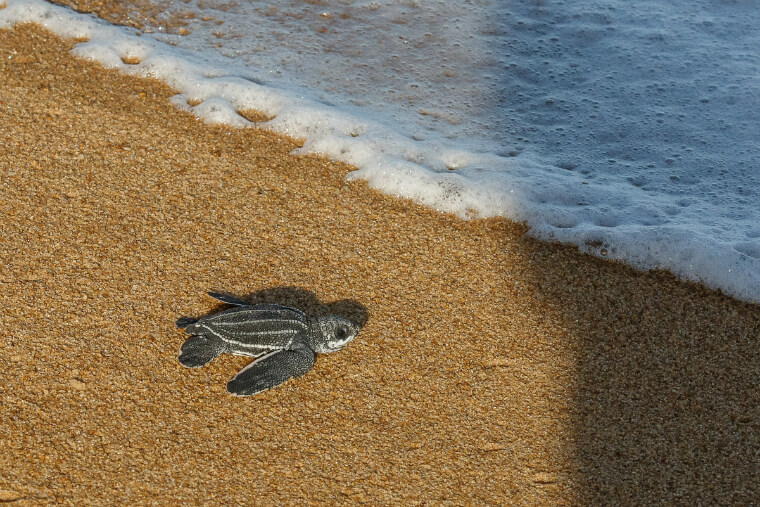Academic research guarantee the suitability of the assessments and guide the actions planned
The flora and fauna conservation work along the stretch between the Fundão dam and the mouth of the Doce River are being conducted in conjunction with universities around the country. Through the Federal University of Espírito Santo (Ufes), researchers from different specialties are part of the Ufes-Doce River Network, created to articulate an integrated action strategy. “Partnerships with educational and research institutions guarantee the suitability of the assessments and bring reliable information to support the planned actions,” says one of the managers of the recovery programs of the Renova Foundation, Rodolfo Pessotti.

Release of turtles in Linhares, Espirito Santo. | Photo: Jeferson Rocio
The first area of operation includes fish populational studies, their relationship with aquatic plants and other organisms in the water. The terms of reference for implementation of the work, which has begun this month, was approved by the Biodiversity Technical Chamber of the Inter-Federative Committee. The analyses will be accompanied by a specialized company and will also receive the support of the Ufes-Doce River Network.
The second front is responsible for assessing the effect of waste on all species of marine animals and plants, those living in freshwater and the aquatic environment of transition between the river and the sea. The methodologies are being tested, according monitoring done in conjunction with the Chico Mendes Institute for Biodiversity Conservation (ICMBio), the State Environmental Institute (IEMA) and universities, with whom the Renova Foundation is signing new partnerships.
The third front will assess the impacts caused by the collapse on animal species and endangered terrestrial plant species, along the stretch between Fundão and the mouth of the Doce River. The methodology has already been approved by the environmental agencies, including the Brazilian Institute of Environment and Renewable Natural Resources (Ibama) and the State Forestry Institute (IEF) and the results of the first analysis will be presented on December 30. The study will incorporate an action plan for identifying endangered species, which will serve as a basis for measures that will re-introduce them in the environment.
